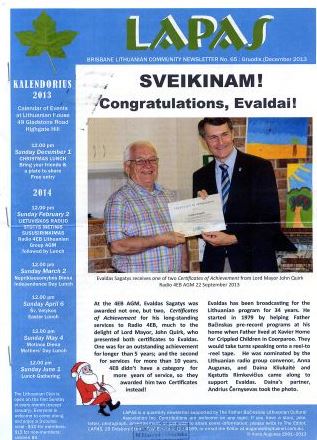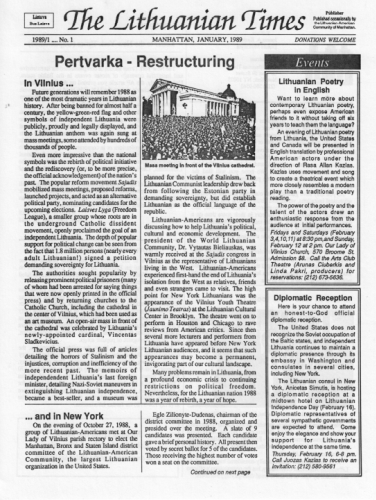Anna Augunas, Editor
The article was originally published in December 2013 issue of “Lapas” (2013, no. 65, p. 10.)

With the announcement on page 2 that subscriptions for Lapas are increasing next year, I would like to acquaint readers with the history of Lapas and how it came into existence.
When I arrived in Brisbane [Australia] in 1990 and first went to the Lithuanian Club in September of that year, I met a number of Lithuanians around my age then (37), give or take a few years either way, who spoke little or no Lithuanian. Some of them told me they grew up feeling they did not fit in as they were brought up Lithuanian, but without speaking the language, so there was an inner turmoil of where they belonged. I related to this too. Although born in Australia, I was brought up Lithuanian also, and when I started school, I didn‘t know a word of English, so I never really fitted in either.
Continue reading “Getting Ready for the Exhibition “Lithuanian Diaspora Media after the 1990s”: The History Of Lapas”
